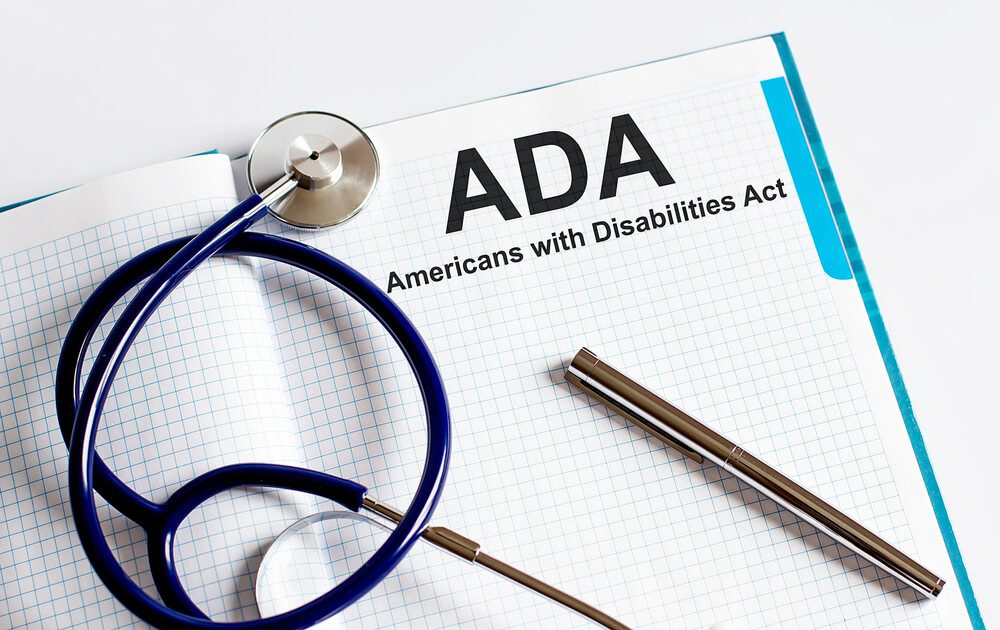
How To Find Top Digital ADA Compliance Errors (With Fixes)
Abiding by the Americans with Disabilities Act (ADA) includes several benefits for your website and its users. For visitors with disabilities, it means easy access to the content that they seek. For your business, it means a wider audience reach, a better brand image, and the prevention of potentially costly lawsuits.
To ensure ADA compliance, you must know the top mistakes that developers make and how to avoid them. This guide talks about:
- What the top errors are, and how to find them.
- How to solve each error.
- How to prevent future mistakes.
There is a lot to discuss, so get ready to take notes. Let’s go!
Top 5 Digital ADA Compliance Errors

Achieving ADA compliance for digital platforms may seem complex due to its broad scope. However, certain issues tend to be more prevalent than others. Understanding the common errors is the first step toward establishing an accessible web environment. They include the following:
1. Lack of Alt Text for Images
Alt text, short for alternative text, describes the content of images, graphics, and other visual elements. This feature is essential for visually impaired users who rely on screen readers.
To find this error, scan your website's images and check if they have corresponding alt texts. Tools such as WAVE (web accessibility evaluation tool) automate this process, highlighting images without alt text.
Example: Consider a photography portfolio website without alt text. An image titled "IMG_1234.JPG" doesn't give any context to visually impaired users. An appropriate alt text such as "Monochrome shot of a bustling city at dusk" is more descriptive and useful.
Fix: The simplest way to fix the lack of alt text in images is by adding descriptive alt text during the image upload process in your content management system. For existing images, use accessibility tools such as WAVE or AChecker to identify the missing alt text and manually add it.
2. Insufficient Contrast Ratio
ADA standards mandate a certain level of contrast between the text and the background to ensure legibility for users with vision impairments.
You can find this error using color contrast analyzers such as the one built into the WebAIM site. They scan your site and point out areas with low contrast.
Example: A website with light gray text on a white background may look aesthetic to some but is challenging to read for people with poor vision.
Fix: The Web Content Accessibility Guidelines (WCAG) recommend a minimum contrast ratio of 4.5:1 for normal text and 3:1 for large text. Tools such as WebAIM's Contrast Checker help verify your site's color contrast. Adjust the color scheme accordingly if any text does not meet the minimum requirements.
3. Inaccessible Forms
Forms that do not provide clear instructions, lack field labels, or do not return descriptive error messages pose significant barriers for users with disabilities.
Manual checks help uncover these errors. For instance, try filling out forms with just the keyboard or using a screen reader to see if all elements are correctly labeled, and the instructions are clear.
Example: A registration form on a website that does not provide clear error messages may confuse users. Instead of a vague "invalid entry" message, stating "Email format invalid" significantly improves the user experience.
Fix: Improving accessibility can involve several steps. First, make sure every form field has a clear and visible label. Then, ensure that error messages are descriptive to help users correct their input.
4. Absence of Keyboard Navigation
Many users with physical disabilities rely on the keyboard instead of a mouse for navigation. Websites should be fully navigable using keyboard-only commands.
Resources such as the W3C's "Keyboard Compatibility" guide help with understanding how to navigate a website only using inputs from the keyboard. Using the instructions, you can manually inspect your site for keyboard navigability.
Example: If a video-sharing website does not allow users to play, pause, or skip videos using keyboard commands, it is not providing full keyboard navigation.
Fix: Solving keyboard navigation issues requires your site to be operable through a keyboard interface. This includes providing visual focus indicators, ensuring all interactive elements are keyboard-accessible, and providing mechanisms to skip blocks of content repeated on multiple web pages.
5. Lack of Captions or Transcripts for Audio and Video Content
For hearing-impaired users, captions for video and transcripts for audio content are crucial. Manual checks are often the best way to find these errors. Play each video or audio file and see if they offer captions or transcripts.
Example: A podcast platform that does not offer transcripts for its audio content excludes hearing-impaired users from accessing the content.
Fix: Make sure that all video content has accurate closed captions, and all audio content offers transcripts. For pre-recorded material, use transcription services. For live material, consider investing in automatic captioning tools.
Creating a truly accessible online experience involves more than just preventing legal repercussions. It is about fostering an environment where everyone feels welcomed and is able to seamlessly interact with your content. Following the pointers above can raise the bar with ADA compliance, while also keeping your website performing well.
How to Prevent Future ADA Compliance Errors

In the digital landscape, maintaining ADA compliance is not one-and-done. As you continually update content, add new features, or redesign your website, new accessibility issues may arise. Therefore, proactive compliance is essential for continued inclusivity and user satisfaction.
Regular audits with reliable web accessibility evaluation tools help ensure ongoing compliance. Tools such as WAVE, AChecker, or Siteimprove automatically identify issues and recommend fixes.
Additionally, consider engaging a digital accessibility consultant for a comprehensive evaluation. Their expertise offers valuable insights into improving your site's accessibility beyond the bare minimum.
Summing Up
ADA compliance is more than just a legal requirement. It is a commitment to inclusivity, broadening your reach, and enhancing your brand's image. Immediate detection of compliance errors and their quick resolution cultivate an environment that welcomes all users.
A truly accessible digital platform sets you apart in today's competitive online landscape. If you want to ensure that your website is ADA-compliant, our team at Digital Authority Partners (DAP) is here to help. Contact us today for comprehensive digital accessibility solutions tailored to your needs.
Want To Meet Our Expert Team?
Book a meeting directly here




